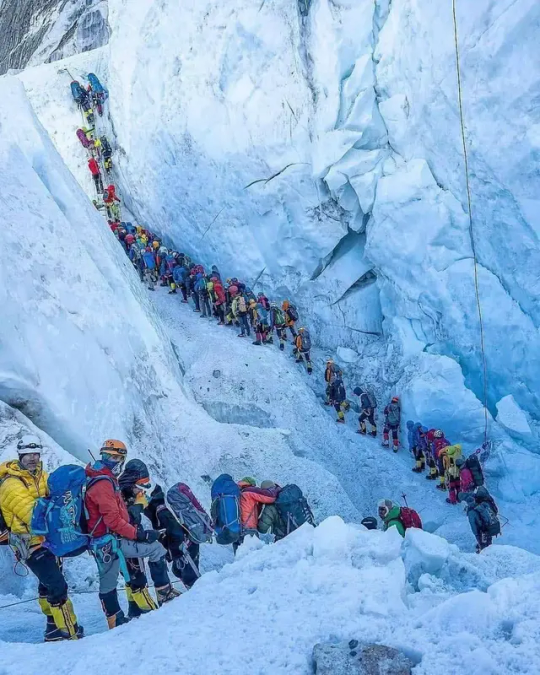#trekking to Everest Base Camp
Explore tagged Tumblr posts
Text
Climb the mountain not to plant your flag, but to embrace the challenge, enjoy the air, and behold the view. Climb it so you can see the world, not so the world can see you." - David McCullough Jr.
#Everest Base Camp Trek#14 Days EBC Trekking Cost 2024#Everest Base Camp Treks#Trek to Everest Base Camp#Everest Base Camp Trekking#Trekking to Everest Base Camp#Everest Base Camp Trek Cost#Everest Base Camp Trek Price#Everest Base Camp Trekking Cost#Everest Base Camp Trekking Price#14 Days Everest Base Camp Trek#14 Days Everest Base Camp Trekking#Everest Base Camp Trek 14 Days#Everest Base Camp Trekking 14 Days#Everest Base Camp Trek 2024#Everest Base Camp Trekking 2024#EBC Trek#EBC Trekking#EBC Trekking Cost
0 notes
Text
#everest base camp trek#everest base camp trekking#everest base camp trek Package#everest base camp trek cost#everest base camp trekking itinerary#trek to everest base camp#everest base camp trek price#Everest Base Camp Trek 14 Days#14 days everest base camp trek#trekking to everest base camp#everest base camp trekking cost#everest base camp trekking package#everest base camp trek 2023#mount everest base camp trek#everest base camp treks
0 notes
Text

Everest Base Camp Trek
211 notes
·
View notes
Note
Not a question just something exciting! Sam is in Nepal getting ready to climb to the back side of Everest. He'll make it to base camp. No small feat!
Yes, Anon, I'm SO excited for him!


As I posted awhile ago, I'm obsessed with all things Mount Everest, and this is a big deal. Base Camp is at 17,000 feet elevation. You can't just go there immediately, or you'll get severe altitude sickness. People usually take a couple of weeks to climb slowly and acclimate to the higher altitude. You don't really know how your body will react until you do it. Some people are fine and some aren't. Sam has climbed a lot of munros and he's very physically fit, so I have a feeling he'll do great. Very much looking forward to reading about his journey and continuing to see pics. This will be a life changing experience for him for sure.
60 notes
·
View notes
Text


its so over/we’re so back
#cornelius hickey#francis crozier#james fitzjames#mt everest 1990#the terror amc#the terror#myart#after a grueling trek. we MADE IT to base camp 🥳 !!!!
72 notes
·
View notes
Text

Evening in Kharikhola
#nepal#trekking#adventure#horizon5 adventure#khumbu#hiking#buddhism#everest base camp trek#kharikhola#gompa
15 notes
·
View notes
Text

Day 3 Everest base camp trek, on the way to Tengboche Monastery
6 notes
·
View notes
Text
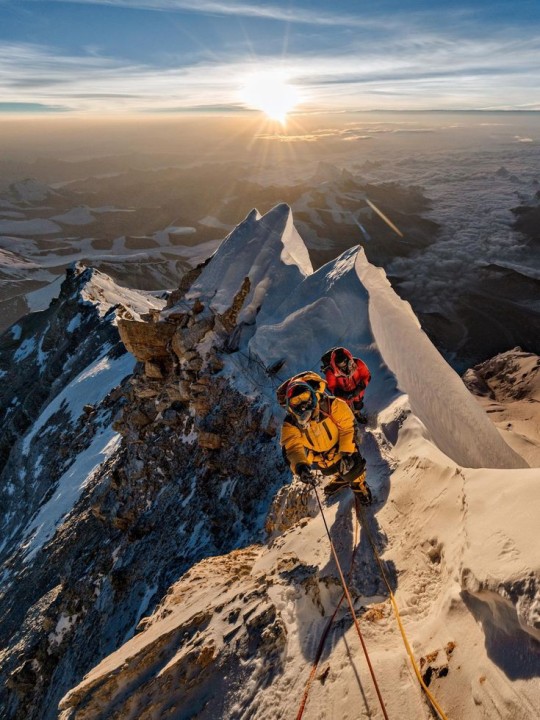
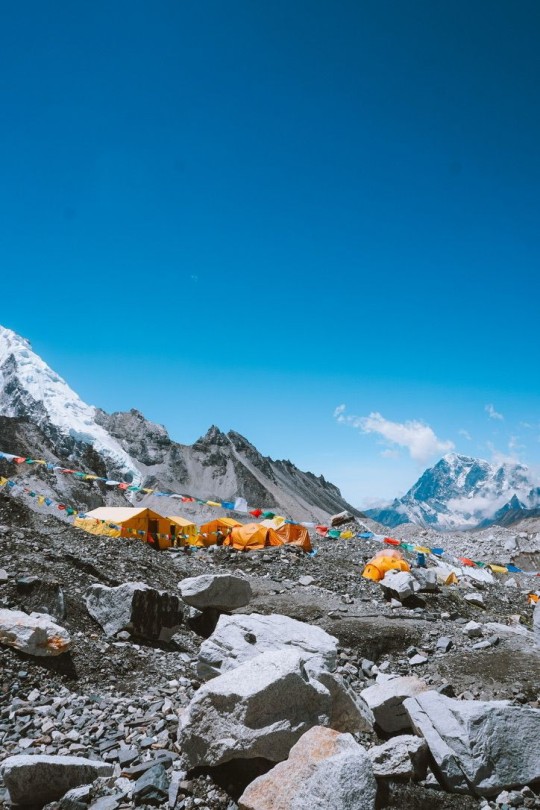
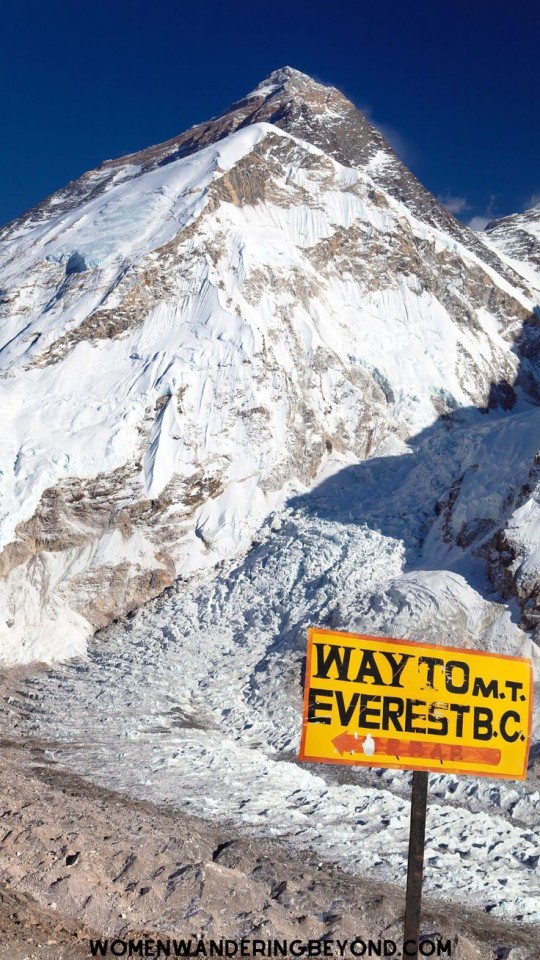
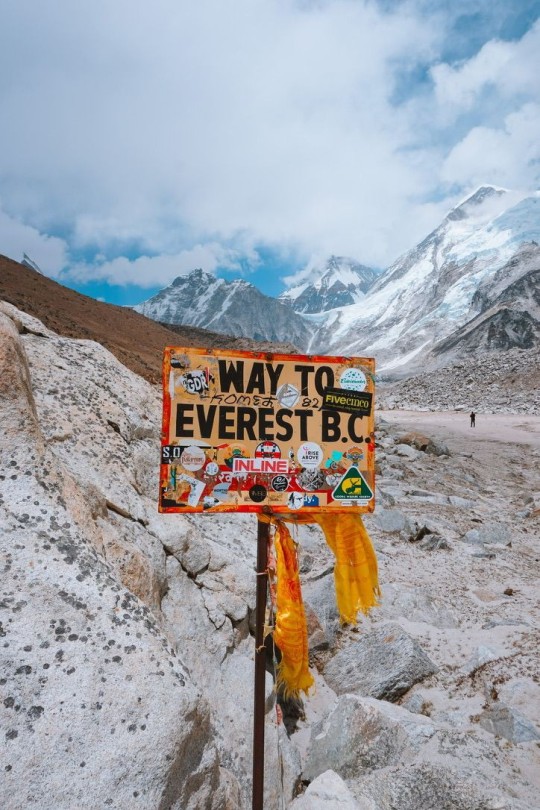
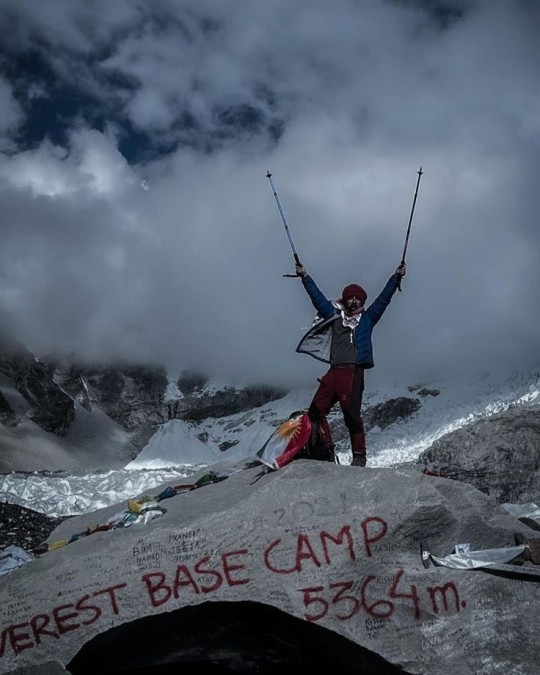
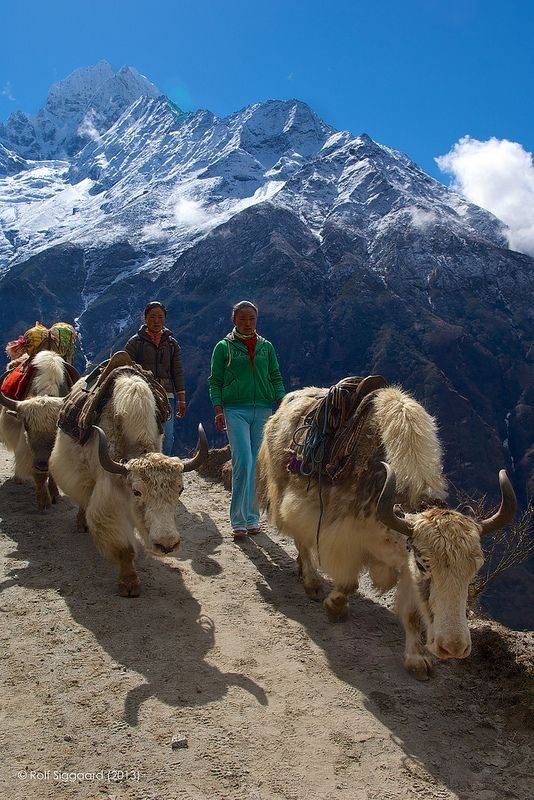
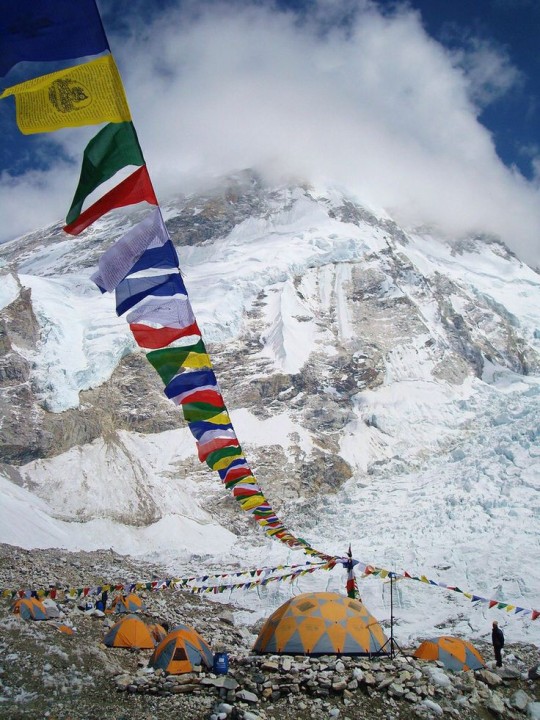

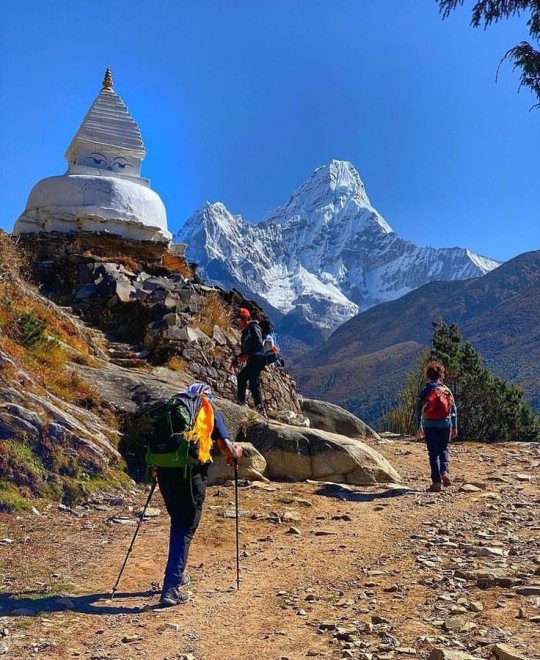
Mt everest, a dream destination.
Pic credit: Pinterest
#mood board#everest moodboard#beautiful moodboard#everest#mountains#trekking#peak of world#base camp#sagarmatha#mountains and it's beauty#snow#dark academia#artists on tumblr#cottagecore#trekking in nepal#nepal tour#nepal travel#pinterest pictures#painting and pictures#pictures from pinterest#paradise#paradise on earth#sky#clouds#mood board of mountains#everest mood board
9 notes
·
View notes
Text
Why the Everest Base Camp Trek is a Must-Do Adventure
The Everest Base Camp Trek (EBC Trek) is one of the most iconic and sought-after trekking experiences in the world. This legendary journey takes you closer to the majestic Mount Everest, the tallest mountain on Earth, while offering breath-taking views of several other towering peaks like Lhotse, Makalu, and Cho Oyu. But the trek isn’t just about the destination—it's about the entire journey, the vibrant Sherpa culture, the serene landscapes, and the sense of accomplishment you'll feel when you reach Everest Base Camp itself.
At Trek The Himalayas, we are passionate about making this adventure as memorable and fulfilling as possible. Here’s why the Everest Base Camp Trek should be on every trekker’s bucket list.
1. Incredible Views of Mount Everest and Other Himalayan Peaks
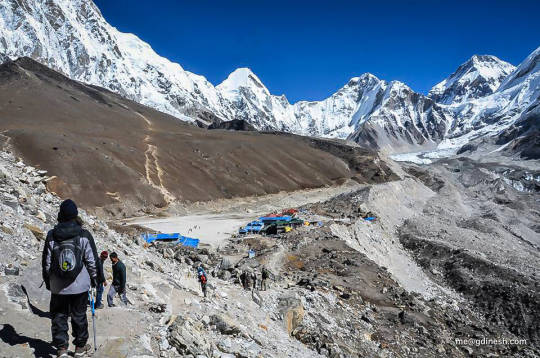
The Everest Base Camp offers unparalleled views of Mount Everest (8,848.86 meters), the highest peak in the world. Along with Everest, you’ll witness other world-famous mountains like Lhotse, Makalu, Cho Oyu, Ama Dablam, and Nuptse. These towering giants will accompany you throughout your trek, constantly reminding you of the awe-inspiring beauty and scale of the Himalayas.
One of the highlights is Kala Patthar—the highest point on the trek at 5,545 meters. From here, you’ll be treated to a panoramic view of Everest, and other peaks such as Pumori, Lhotse, and Nuptse. The sunrise and sunset views from Kala Patthar are magical, with the peaks glowing in the morning light and transitioning to soft golden hues in the evening.
2. Cultural Immersion in the Sherpa Villages
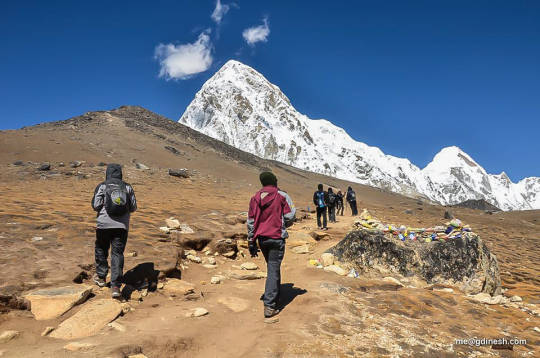
The EBC Trek isn’t just a journey through nature; it’s a cultural expedition as well. The trail passes through several traditional Sherpa villages like Namche Bazaar, Tengboche, and Dingboche, where you’ll have the opportunity to experience the hospitality of the Sherpa people. The Sherpas are known for their resilience and deep connection to the mountains.
Throughout the trek, you’ll encounter Buddhist monasteries, prayer flags, and stupas, offering you a spiritual experience that enhances the physical challenge of the trek. Trekking in the heart of Sherpa culture, you'll learn about their rich traditions and lifestyles and gain insight into their everyday lives in this remote Himalayan region.
3. Experience the Thrill of High-Altitude Trekking
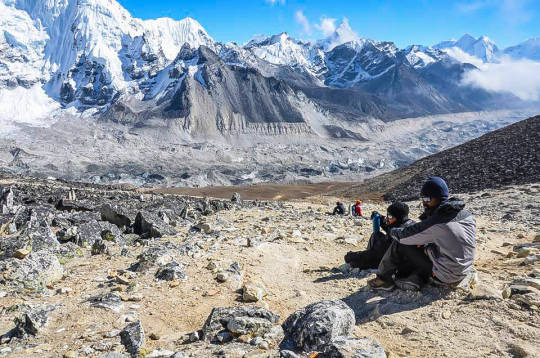
Trekking to Everest Base Camp is not just about reaching a destination; it’s about the physical challenge and mental resilience required to reach it. EBC trekking takes you to elevations of over 5,000 meters, and trekking at high altitudes is not something most people experience. The sensation of reaching Everest Base Camp, standing at the foot of the world’s highest peak, is indescribable. The sense of achievement is unmatched and one of the main reasons why so many trekkers set out on this journey.
The trail offers exhilarating experiences such as crossing suspension bridges over rushing rivers, trekking through dense pine forests, and navigating through rocky terrain. As you climb higher, the views become even more dramatic, motivating you to push through the challenges of the trek.
4. The Sense of Accomplishment at Everest Base Camp
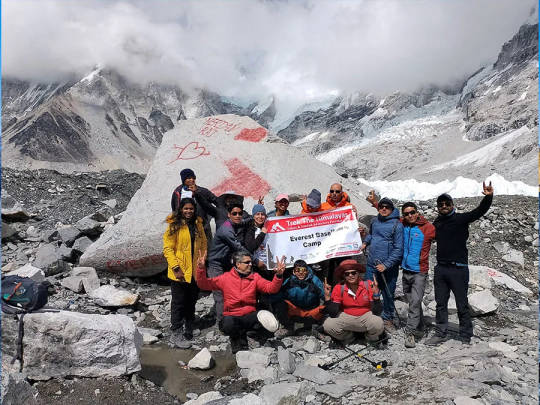
Reaching Everest Base Camp is a dream come true for many trekkers, and it’s one of the most rewarding moments of the trek. After several days of walking through rugged trails, beautiful valleys, and crossing high-altitude passes, arriving at the base camp itself is a thrilling and emotional experience. It is the starting point for those who attempt to summit Mount Everest and represents the culmination of a challenging journey for trekkers from around the world.
The feeling of standing at the base of Everest, with the grandeur of the surrounding peaks and glaciers, is one of the most satisfying accomplishments any trekker can achieve.
5. Exploration of Sagarmatha National Park (UNESCO World Heritage Site)
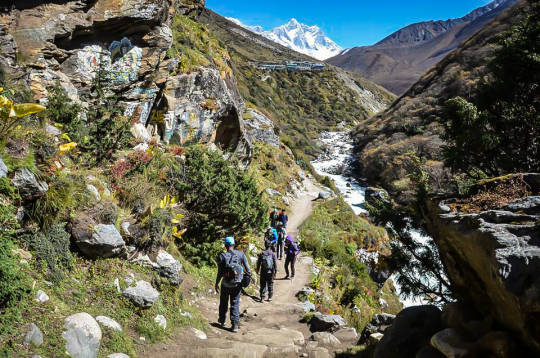
The Everest Base Camp Trek takes you through Sagarmatha National Park, a UNESCO World Heritage site. The park is rich in biodiversity, home to rare species like the snow leopard, red panda, and Himalayan tahr. It also offers stunning views of rivers, glaciers, and valleys that add to the trek's natural beauty.
As you trek through this national park, you will encounter ancient Buddhist monasteries, including Tengboche Monastery, and cross pristine alpine meadows, crystal-clear lakes, and other awe-inspiring landscapes that showcase the beauty of the Khumbu region.
6. Tea House Stays and the Unique Experience of Mountain Lodging
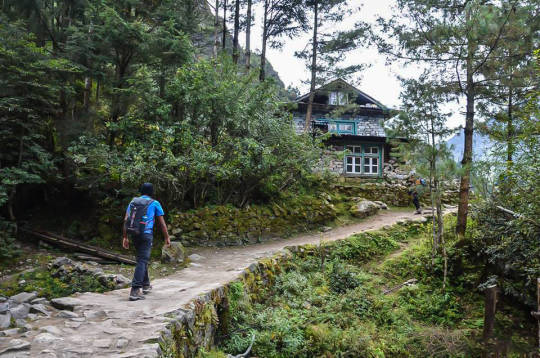
A trek to Everest Base Camp is a teahouse trek, meaning that along the route, you will stay in local tea houses or mountain lodges. These cozy accommodations, built from wood and stone, offer a warm place to rest after a long day of trekking. Staying in these mountain lodges is a unique experience in itself, where you will be surrounded by stunning views of snow-capped peaks.
The tea houses provide meals and shelter, and you can interact with fellow trekkers and locals. It’s a wonderful way to unwind after your daily trek while soaking in the authentic mountain atmosphere.
7. Kala Patthar: The Ultimate Everest Viewpoint
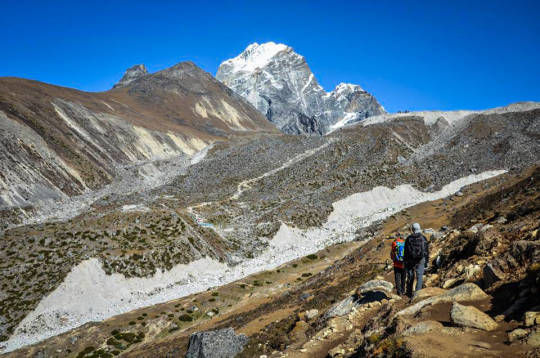
When you reach Kala Patthar, you’ll experience one of the best panoramic views of Mount Everest and its surrounding peaks. Located at an altitude of 5,545 meters, Kala Patthar is the highest point of the trek and offers breathtaking views of Everest, Lhotse, Makalu, and other prominent peaks. Watching the sunrise from here is a surreal experience that many trekkers describe as one of the highlights of the entire journey.
8. A Journey Through History and Legacy
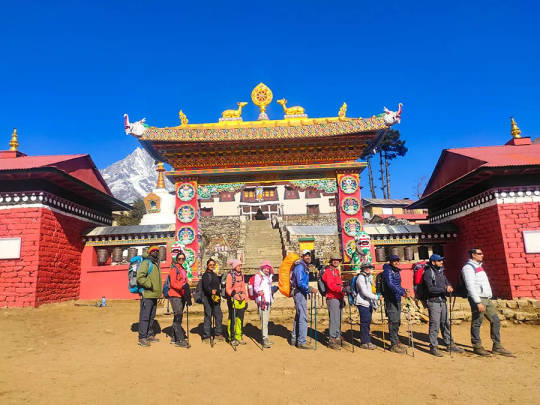
Along the EBC Trek, you’ll pass by memorials for famous mountaineers like Tenzing Norgay and Edmund Hillary, who first successfully summited Mount Everest. These memorials, located near Dughla and Tenzing Norgay Stupa, are poignant reminders of the courage and perseverance required to scale Everest. The sense of history adds a meaningful dimension to the trek, reminding trekkers of the great legacy left behind by these pioneers.
9. An Adventure That Will Stay With You Forever

The Everest Base Camp Trek offers an adventure unlike any other. With each step, you’ll be rewarded with views of towering mountains, lush forests, rushing rivers, and ancient villages. It’s a trek that combines adventure, culture, and natural beauty, making it a bucket-list journey for trekkers across the globe.
Why Choose Trek The Himalayas for Your Everest Base Camp Trek?
When you embark on the EBC Trek, it's important to choose a reliable and experienced trekking partner. Trek The Himalayas has a team of expert guides and porters who know the Everest region inside and out. With our years of experience, we ensure your trek is safe, enjoyable, and unforgettable. From the right gear to acclimatization advice, we’ll help you prepare for the journey of a lifetime.
Ready for the adventure of a lifetime? Let Trek The Himalayas guide you on the Everest Base Camp Trek—an experience you will cherish forever.
#everest base camp trek#everest base camp#trek the himalayas#trekking in nepal#ebc trek#ebc trekking
2 notes
·
View notes
Text

#Nepal#Everest#Base#Camp#Trek#trekking#Tengboche#Guest#House#room#view#comfortable#comfort#Himalaya#Himalayan#Mountains#mountain#Mount#regional gothic
3 notes
·
View notes
Text
Everest Base Camp Trek, 14 Days EBC Trekking Cost 2024
The Everest Base Camp trek is one of the most popular and iconic treks in the world. It takes you to the base camp of Mount Everest, the highest peak in the world at 8,848.86 m (29,031ft) above sea level. Thousands of people come from the corner of the world to travel for only one purpose that is Everest base camp trek. To complete the Everest Base Camp Trek, it is the dream of many tourists. Everest Base Camp trek is a bucket-list adventure for many outdoor travelers, offering a chance to be in the presence of the world's highest peaks and experience the beauty of the Himalayas close.
The Everest base camp trek usually begins with a thrilling flight from Kathmandu to Lukla, a small mountain town. From Lukla, trekkers start their journey on foot. The Everest Base Camp trek is considered moderately challenging. While it doesn't require any technical climbing but trekkers should be physically fit and prepared for long, uphill hikes at high altitudes. The trek takes about 12-14 days, depending on the specific route and itinerary you choose. Some of the highlights of the trek include stunning views of Mount Everest, Lhotse, Nuptse, Ama Dablam, and other peaks, Kalapathar- from where you can witness the gorgeous view of mount Everest, Sagarmatha National Park- a UNESCO World Heritage Site, crossing iconic suspension bridges, visiting Buddhist monasteries, and experiencing the unique Sherpa culture and hospitality. Along the trail, there are teahouses and lodges that offer basic accommodation and meals. The facilities are more homely at higher altitudes, but they provide a comfortable and cozy environment for trekkers. Likewise, welcome Nepal treks offers you quality services and amenities with a reasonable prices of Everest base camp trek. We have huge experience in organizing treks to the Everest Base Camp. As long as, we have knowledgeable guides, well-planned itineraries, and a good understanding of safety protocols. We can customize the trek itinerary based on your preferences, fitness level, and time constraints. However, due to its popularity, the region can get crowded during peak seasons, so booking in advance is recommended.
Overall, Everest Base Camp trek is more than just a trek. It’s an extraordinary journey that allows you to witness the glory of the Himalayas, experience the Sherpa culture, and challenge yourself physically and mentally. At last, but not the least, Everest Base Camp trek is a truly remarkable and unforgettable adventure that offers trekkers. Everest Base Camp trek is a once in a lifetime experience for many trekkers. It creates memories that will stay with trekkers forever, making it a bucket-list adventure for adventurers around the world. For more info visit https://www.welcomenepaltreks.com/everest-base-camp-trek
Looking for an Everest Base camp trek? We offer 14 days trek to Everest base camp packages at reasonable costs. Call us at +977 9841767236 for Everest base camp trekking. If you are in search of the best Everest base camp trekking package, then our Everest Base Camp Trek 14 Days Itinerary is the right one for you.
#Everest Base Camp Trek#Everest Base Camp Treks#Trek to Everest Base Camp#Everest Base Camp Trekking#Trekking to Everest Base Camp#Everest Base Camp Trek Cost#Everest Base Camp Trek Price#Everest Base Camp Trekking Cost#Everest Base Camp Trekking Price#14 Days Everest Base Camp Trek#14 Days Everest Base Camp Trekking#Everest Base Camp Trek 14 Days#Everest Base Camp Trekking 14 Days#Everest Base Camp Trek 2024#Everest Base Camp Trekking 2024#EBC Trek#EBC Trekking#EBC Trekking Cost
1 note
·
View note
Text

The sunrise view of Mt. Everest from Kalapatthar unveils a golden glow as the first rays kiss the towering peak, painting the Himalayas in a palette of fiery hues. Standing at 5,600 meters, it’s a moment of pure serenity and awe, where the world’s highest summit feels within reach.
Do you also wanted to witness this surreal beauty of Mt. Everest? Book our 14 Days Everest Base Camp Journey through the given link below. Solo and private group bookings are available for 2025 and 2026.
Contact us:
Email: [email protected]
WhatsApp: +977-9813637616
3 notes
·
View notes
Text
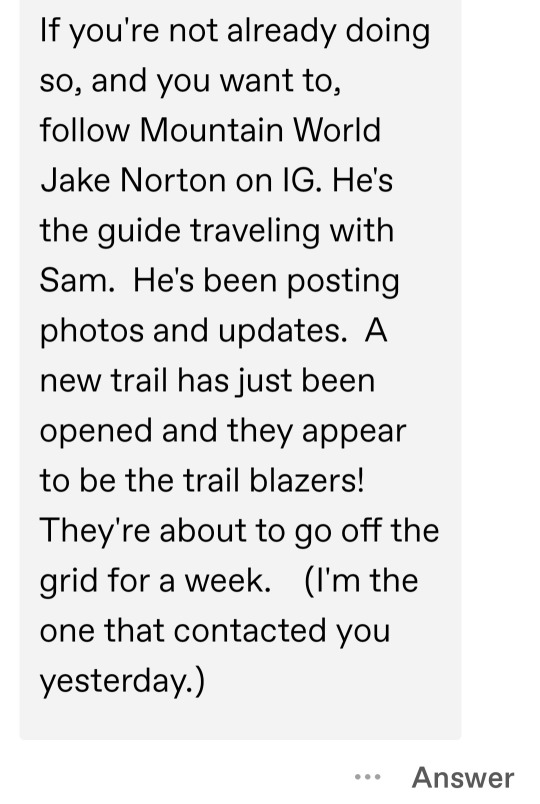
Hi, yes, I'm already following along. Sam looks SO happy. 😍

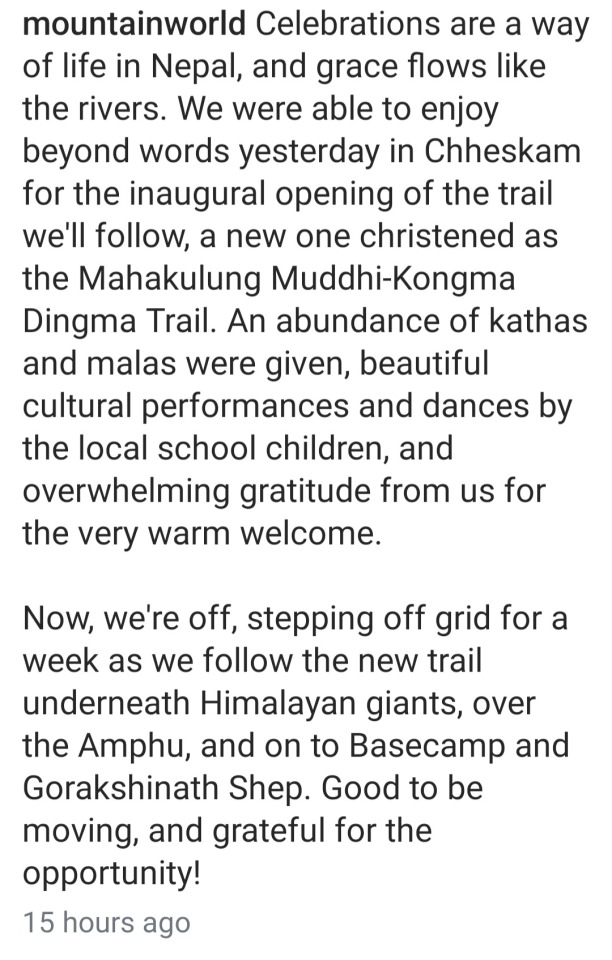
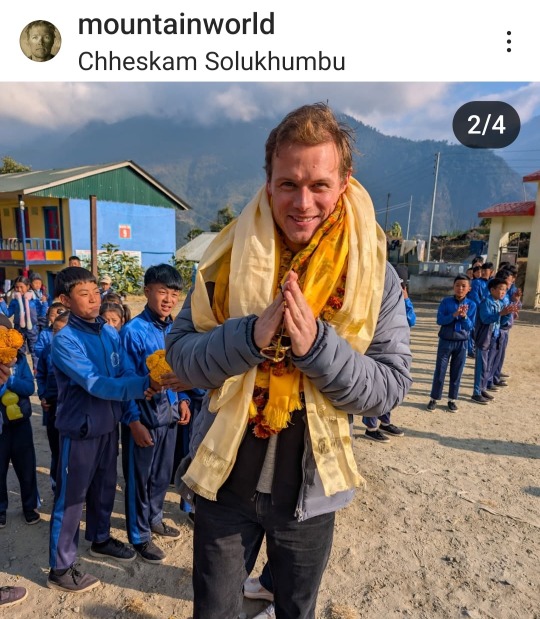
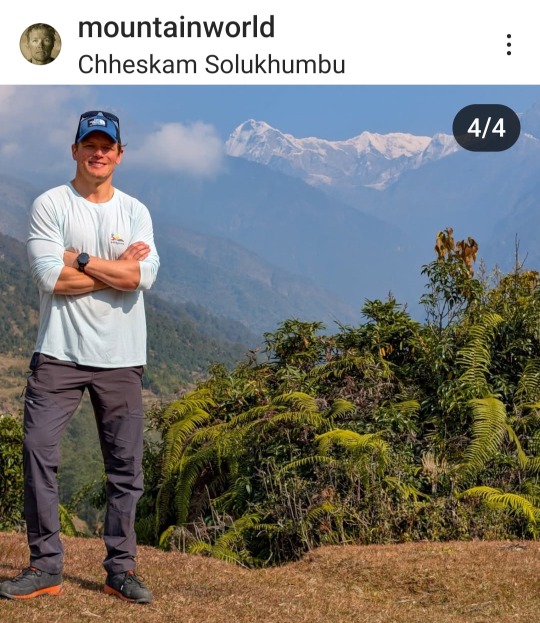
Can't wait to see and read more! Life changing experience for sure.
#moutainworld#sam heughan#jake norton#mount everest#everest#everest base camp#everest base camp trek
45 notes
·
View notes
Text

Nepal is home to some of the world’s most beautiful and challenging trekking routes, offering a mix of stunning landscapes, rich culture, and breathtaking mountain views. Here are the top 10 trekking routes in Nepal for 2025 adventure ✨️ ♥️
1️⃣. Everest Base Camp Trek: This iconic trek takes you to the base camp of Mount Everest, offering stunning views of the world's highest peak, as well as surrounding peaks like Lhotse and Nuptse.
2️⃣. Annapurna Circuit Trek: Known for its diverse landscapes, this trek offers panoramic views of the Annapurna and Dhaulagiri mountain ranges.
3️⃣. Langtang Valley Trek: This trek takes you through the scenic Langtang Valley, surrounded by stunning peaks like Langtang Lirung.
4️⃣. Ghorepani Poon Hill Trek: A shorter, easy trek, it offers breathtaking views of the Annapurna and Dhaulagiri ranges.
5️⃣. Mardi Himal Trek: A relatively short and less crowded trek, the Mardi Himal trek provides stunning views of Machapuchare, Annapurna South, and Mardi Himal.
6️⃣. Manaslu Circuit Trek: This remote and rugged trek takes you around Mount Manaslu, the eighth-highest peak in the world. It offers beautiful mountain views and a challenging pass (Larkya Pass).
7️⃣. Upper Mustang Trek: Trekking in the "forbidden kingdom" of Mustang, this route offers a unique blend of Tibetan culture, desert-like landscapes, and ancient monasteries.
8️⃣. Kanchenjunga Base Camp Trek: This challenging trek takes you to the base of Kanchenjunga, the third-highest mountain in the world.
9️⃣. Rara Lake Trek: Located in western Nepal, this trek takes you to Rara Lake, the largest lake in Nepal, surrounded by snow-capped mountains.
🔟. Tsum Valley Trek: Tucked away in a hidden valley, this trek offers an off-the-beaten-path experience. The valley is rich in Tibetan Buddhist culture with ancient monasteries, stupas, and stunning views of the Ganesh Himal and Sringi Himal ranges.
__________
Book your seat now:
WhatsApp : +977 9869836541
#top 10 trekking routes#trekking#trending destinations#annapurna#everest#everest base camp trek#annapurna circuit#annapurna circuit trek#langtang valley#langtang valley trek#mardi himal trek#manaslu circuit#manaslu circuit trek#kanchenjunga base camp trek#kanchenjunga base camp#eastern nepal#trekking in nepal#nepal
2 notes
·
View notes
Text

The view of Everest from Gokyo Ri
#nepal#adventure#trekking#horizon5 adventure#khumbu#hiking#everest base camp trek#gokyo ri#everest#trekking in nepal#himalayas#mountains
14 notes
·
View notes
